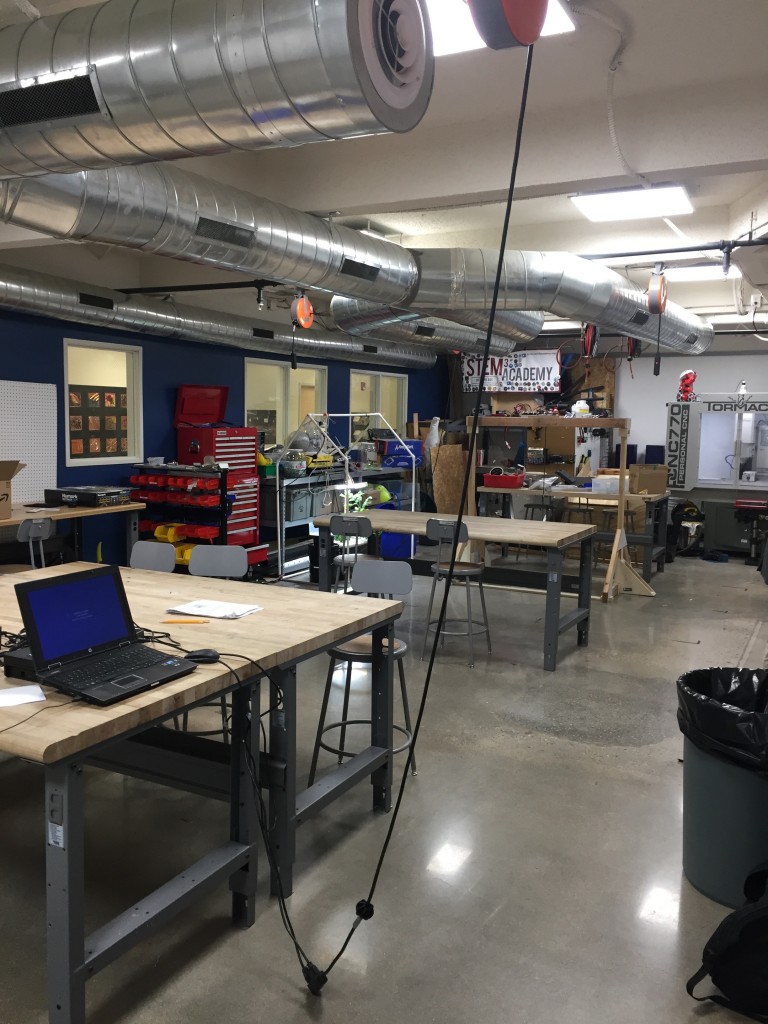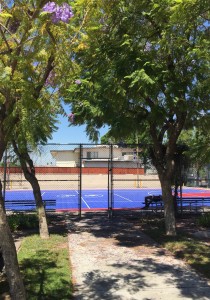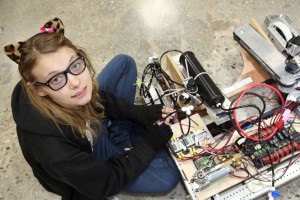Dear Readers:
I’m so excited to publish this excellent piece by Sanjay Nambiar. Along with his wife, Priya, Sanjay runs Nambiar Advising and they are parents at PS1 Pluralistic School in Santa Monica. The decision to apply to K-12, K-8 or K-6 can be confusing and a lot of parents end up applying to more than one of these educational models. That’s what my own family did. But what happens when you have to choose between a K-6 and a K-12 for example? What about leaving a K-8 or K-12 before graduation? Read on! Sanjay breaks it all down for you. –Christina
Tough Decisions! Should I Lock in the Next 13 Years Now, or Should I Allow for Change?
A Look at K-12 vs. K-8 vs. K-6 Private Schools
You’re ready to apply to private school. You’ve done your research regarding traditional versus progressive pedagogies. You have a good idea of the type of setting where your child will thrive.
Now, should you apply to K-12 schools and be done with the process forever? Or maybe K-6 is a better strategy? And what about K-8? A few schools offer Developmental Kindergarten.
As if worrying about tuition and application essays were not enough, we also have this K-12 vs. K-8 vs. K-6 debate. It’s enough to make any parent pull his or her hair out!
Okay, deep breaths. We can do this. We will do this.
When it comes the grade structure of a school, each option offers a bevy of pros and cons. Ultimately, it’s about finding the right fit for your child and family. What works for Johnny might be the opposite of what’s best for Jennifer. There is no right or wrong strategy.
But there is solace in this. As long as we try our best – and do our research – we’re doing right by our kids. And that is always priority number one (at least in our opinion).
So, let’s jump in . . . Below is a check list of the some of the pros and cons for each of these school structures. This list focuses just on the nature of the grading groups. It doesn’t delve into the specific academic approaches of any school, which often are the biggest determinants of what constitutes a best-fit for a child. Nonetheless, these are a few elements to consider as you’re exploring various schools.
K-12 Pros
You don’t have to do this again.
Applying to private school can be a grueling and anxiety-inducing process. From understanding the various school philosophies to the essays, interviews, school tours, and financial aid applications, it’s often overwhelming for even the most prepared families. With a K-12 school, once you’re in, you never need to do this again.
No ISEE
Starting at 5thgrade, students need to take the Independent School Entrance Examination (ISEE) when applying to private school. (Think of it as the SAT for private schools.) But if you’re in a K-12 school, your child doesn’t need to take this test. Ever. That’s a decent amount of stress and studying to avoid.
13 years of consistent families & friends
Many K-12 schools have a special sense of community. Your child can be with the same cohort for up to 13 years. It becomes like family, and those bonds can last a lifetime; some schools even call these kids “lifers”. If the fit is right, this consistency through adolescence and the teenage years can be wonderful. But there’s also another side to this . . . (see below).
K-12 Cons
Kids change
Developmentally, we often don’t know the details of a child’s learning style until about 3rdor 4thgrade. Moreover, many kids change significantly during their tween years (10- to 12-years-old). As a result, the academic approach of the school you chose when your child was in Kindergarten might not be a fit when she is in 6thor 7thgrade.
13 years of consistent families & friends
If you don’t love your community in elementary school at K-12 school, you might be out of luck. Your child could be in a peer group that he or she doesn’t connect with, and likewise you might not connect with other parents. And this varies from year to year. The classes above and below your daughter’s might be delightful, but she unfortunately might be stuck with a crew that doesn’t totally fit her – even if new students join the school in 6th, 7th, or 9thgrade. It’s random and sometimes can’t be anticipated. Moreover, as your child changes in the tween and teen years, he might want (or need) a new and different group of friends. Changing at 6thor 9thgrade could be a refreshing move that leads to more success. Further, this change can help prepare kids for the big transition on the not-too-distant horizon: going to college.
K-6 Pros
A focus on elementary education
K-6 schools tend to be experts on elementary education. They know the pedagogy and philosophy incredibly well. They know this age group incredibly well. It’s what they do, and all of their resources are devoted to this one aspect of education. There’s no diversion of resources into middle or high school.
An opportunity to change
At 6thgrade, you’ll have a much better idea of how your child learns and in what type of setting he or she will flourish. That means you can apply to great options at 7thgrade, both private and public, that could help foster your child’s academic, creative, and social potential. And that school might be very different from your current K-6 school, and that’s okay. Also, a child can have a special opportunity to change his or her environment in 7thgrade. It’s a time to learn key life skills: how to move to a new setting, how to adapt to new people, and how to cope with change, all with the benefit parental support.
K-6 Cons
You’ll have to do this again
As mentioned before, applying to private school can be stressful on many levels. Also, your child will need to take the ISEE (or perhaps another entrance exam, depending on the school) as part of the application. If you’re at a K-12 school, you get to avoid this process.
Change can be hard
Although learning how to adapt to new environments is an important life skill, for some children this type of change can be overwhelming. Combined with the typical trials and tribulations of puberty and early teenage years, switching to a new middle school can be a stressful experience, even if it results in personal growth.
K-8 Pros
Easier transition to middle school
K-8 schools enjoy the K-6 pros mentioned above. Additionally, they provide the benefit of a relatively seamless transition to middle school (7th& 8thgrades). This can reduce the stress of changing schools and make those awkward early teenage years a little easier for students, especially those who may be a little shy or vulnerable. Also, 7thand 8thgraders in these schools have an opportunity to be leaders, while delaying the move to another school simultaneously keeps them young. In fact, researchers in one study compared K-8 schools to traditional 6-8 settings and discovered that K-8 students earned higher SAT scores as well as higher GPAs in 9thgrade[1].
K-8 Cons
Family attrition
K-8 schools also encounter the same K-6 cons mentioned above. Additionally, some families transition out of a K-8 school at 7thgrade, for a variety of reasons. For example, some K-12 (and 6-12 or 7-12) private schools have fewer openings at 9thgrade than at 7th. This results in 7thand 8thgrade classes at K-8 schools that are thinner, as families apply out sooner. The smaller class sizes can be a bonus, but this attrition also can affect morale, change the culture of a class, and result in fewer resources for these grades.
Keep It in Perspective
No matter where you choose to send your child to school, success has a myriad of factors beyond the K-12/K-8/K-6 debate. When a student thrives, it’s about educational philosophy, peer circles, access to creative endeavors, family dynamics, and so much more. Perhaps knowing this can make the research and decision about K-12/K-8/K-6 a little less stressful. Because, ultimately, the educational journey is a long one. And regardless of what type of school structure your children attend, they can forge a path that harnesses their potential and joy for learning.
Priya and Sanjay Nambiar run Nambiar Advising, a consulting practice that shepherds families through the private school admissions process, from helping clients find the best-fit schools for children to application support, essay editing, interview preparation, and more. Priya has spent more than 20 years in education and was the Associate Director of Admissions at the Brentwood School in Los Angeles. She earned a B.A. in Education from Brown University and an M.Ed. from Harvard University. Sanjay is an entrepreneur and professional writer who has written several award-winning children’s books. He earned a B.A. in Economics and Neurobiology from U.C. Berkeley and an M.B.A. from UCLA. To learn more, please visit www.nambiaradvising.com.
[1]Look, K. (2009). The great K-8 debate. The Philadelphia Education Fund. www.philaedfund.org/notebook/TheGreatK8Debate.htm
Keep up with the latest L.A. private school news and events on Beyond The Brochure’s Facebook Page.









